As 2025 ushers in a new era of digital engagement, therapists must navigate the intricate web of SEO to thrive. This guide is a treasure trove for therapists seeking to master SEO. It’s not merely about peppering content with keywords; it’s an artful blend of compelling content and strategic positioning.
SEO is a beacon for a therapist, guiding potential clients through the digital maze to their virtual doorstep. Key strategies include:
- Tailoring website content for optimal SEO.
- Leveraging local SEO to connect with nearby clients.
- Enhancing site credibility with smart backlink tactics.

Enter Plerdy, a transformative tool for therapists to analyze user behavior, boosting conversion rates and refining user experiences. This guide isn’t just an introduction to SEO for therapists; it’s a roadmap to digital prominence. Dive in and reshape your online presence, paving the way to greater reach and impact.
SEO Importance in the Therapy Field
SEO emerges as a lighthouse guiding potential clients to the right therapist in the bustling mental health field. Imagine a therapist’s website as a digital sanctuary; SEO is the path that leads clients through the virtual door. For therapists, mastering SEO isn’t just about visibility—it’s about connecting with those needing expertise. In this digital age, a therapist without SEO is like a library without a signpost.
Here’s how SEO makes a difference:
- Elevates a therapist’s website above the noise of online competition.
- Targets individuals actively seeking therapy, ensuring relevant traffic.
- Builds credibility and trust through higher search engine rankings.
However, it’s not just about being seen; it’s about resonating with the right audience. SEO allows therapists to tailor their online presence, ensuring their services align with potential clients’ specific needs and queries. This alignment isn’t just beneficial—it’s essential in an industry where personal connection and trust are paramount.
For therapists, a well-optimized website acts as a bridge between their skills and the community’s needs. It’s not just about keywords; it’s about creating a narrative that speaks directly to those seeking help. An optimized site tells a story of understanding, expertise, and the promise of a helping hand in times of need.
SEO in the therapy field isn’t just a tool; it’s a commitment to reach out and offer help in the most accessible and efficient way possible.
Keyword Research for Therapists
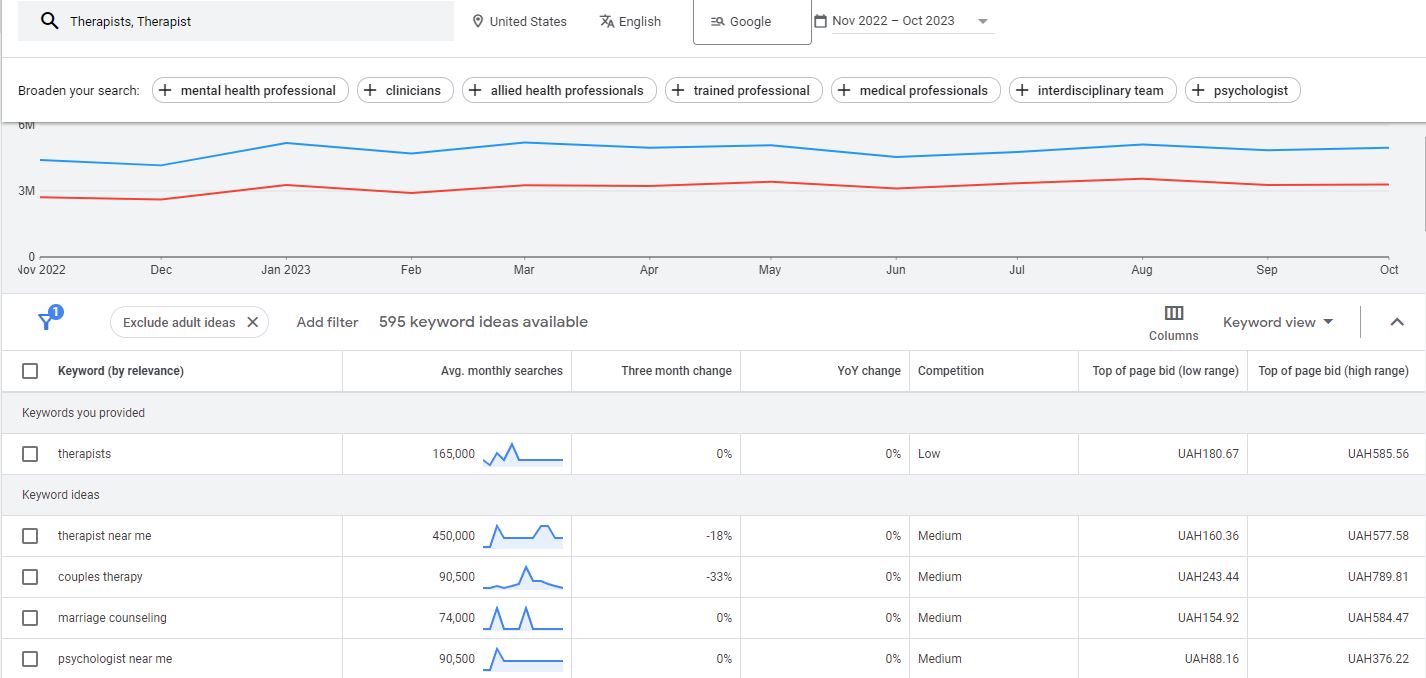
Keyword research for therapists is akin to uncovering a treasure map, guiding them to the hearts and minds of those seeking their help. In SEO, therapists must discover the terms and phrases that resonate with their prospective clients. This research is a cornerstone in constructing an SEO strategy that elevates their online presence and fosters meaningful connections.
Consider these steps in keyword research:
- Identifying Core Topics: Pinpointing the central themes of their practice, whether it’s anxiety, depression, or relationship counseling.
- Exploring Search Trends: Keeping an eye on the frequently searched terms in the mental health sector, adapting to changing trends and needs.
- Analyzing Competitors: Studying what keywords other therapists are targeting can provide valuable insights and reveal gaps in the market.
For therapists, SEO isn’t just about ranking high in search results; it’s about ensuring they appear when someone needs their expertise. It’s about using the right words to say, “I understand, and I can help.”
By weaving these researched keywords into their website content, therapists don’t just improve their SEO; they speak directly to the soul of their potential clients. This approach transforms their website from a digital brochure into a beacon of hope for those lost in the vast sea of online information.
In essence, keyword research for therapists is more than an SEO tactic; it’s a strategic alignment of their online language with the heartfelt needs of their clients, establishing a foundation of trust and understanding even before the first session begins.
Optimizing Your Therapy Website’s Structure
In the digital tapestry of the internet, a therapist’s website structure is the loom on which the threads of SEO are intricately woven. Optimizing therapists’ websites is about creating a pleasant, informative, and easy-to-navigate location for individuals seeking aid.
Essential elements to focus on include:
- Intuitive Navigation: Streamlines clients’ paths to find information, ensuring a hassle-free experience.
- Mobile Responsiveness: Tailoring the website to perform seamlessly across various devices, acknowledging the growing reliance on smartphones.
- Fast Loading Speeds: Enhancing user experience and SEO by ensuring the website loads swiftly.
Each page on a therapist’s website should be a beacon, guiding visitors to the information they seek easily and clearly. Every element should intertwine seamlessly from the home page to the contact information, creating a journey that reflects the therapist’s understanding and professionalism.
For therapists, this optimization goes beyond technicalities; it’s about aligning their digital presence with the empathy and care inherent in their profession. A well-structured website speaks volumes about a therapist’s attention to detail and dedication to providing a comforting online environment.
Optimizing a therapy website’s structure is a blend of technical SEO savvy and a deep understanding of the journey a potential client undertakes. The goal is to create a digital sanctuary that begins therapy before the first meeting.
Creating Engaging Content for Therapy Websites
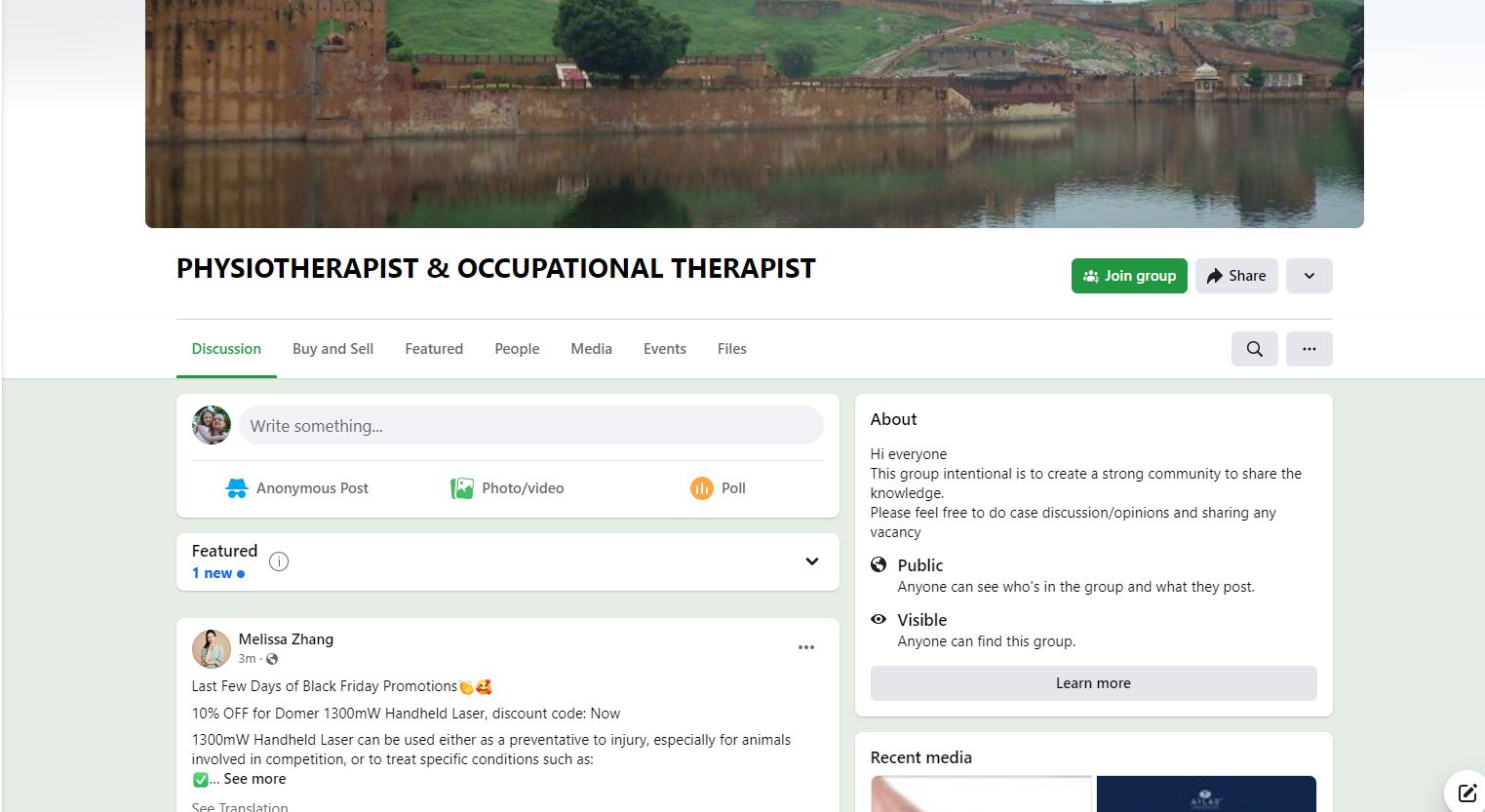
Writing treatment website content is like painting a portrait—each stroke expresses knowledge, empathy, and skill. For therapists, content creation is pivotal in connecting with their audience, seamlessly weaving SEO into the narrative. This is not just about populating pages with keywords; it’s about speaking to the heart of potential clients.
Key considerations include:
- Authentic Voice: Infusing content with genuine care and professional insight, reflecting the therapist’s unique approach.
- Educational Value: Providing helpful, accurate information that empowers and enlightens visitors.
- Emotional Connection: Crafting stories or case studies that resonate personally, building trust and relatability.
In therapy, content is more than words on a screen; it’s a bridge of understanding. SEO-driven material must reflect therapy’s compassion and comfort before the first session. It’s about creating a space where visitors feel heard, understood, and inclined to engage further.
For therapists, this content strategy blends SEO with storytelling, ensuring their website ranks well and genuinely connects with those seeking help. Every article, blog post, or resource page should echo the therapist’s commitment to healing and growth.
SEO and empathy combine in engaging treatment website content. It’s not just about drawing in visitors; it’s about offering a glimpse of the journey towards healing, making the first step feel a little less daunting.
Local SEO Strategies for Therapists
Local SEO for therapists is like tailoring a suit; it must fit the unique contours of their community’s needs. For therapists, local SEO isn’t just about being found; it’s about being found by the right people—those in their vicinity seeking support. This approach to SEO involves a strategic blend of techniques that pinpoints the therapist’s presence in local search results.
Crucial steps in local SEO include:
- Google My Business Optimization: Ensuring the therapist’s listing is complete, accurate, and engaging, offering a snapshot of their services.
- Localized Keyword Strategy: Integrating location-specific keywords into website content, aligning with what local clients are searching for.
- Community Engagement: Participating in online and offline local events and discussions to build a strong local presence.
This tailored approach allows therapists to reach out to their immediate community effectively. It’s not just about climbing the ranks in search engines but about planting their digital roots in the area they serve. In an era where local searches lead the way, especially in personal services like therapy, being prominently visible in local search results is paramount.
For therapists, local SEO is a powerful tool that bridges the gap between their services and the community’s needs. It’s about becoming a go-to resource for those nearby, creating a sense of familiarity and trust even before the first contact.
Local SEO for therapists creates a pleasant, accessible digital presence for anyone seeking help on their path to well-being.
The Role of Backlinks in SEO for Therapists
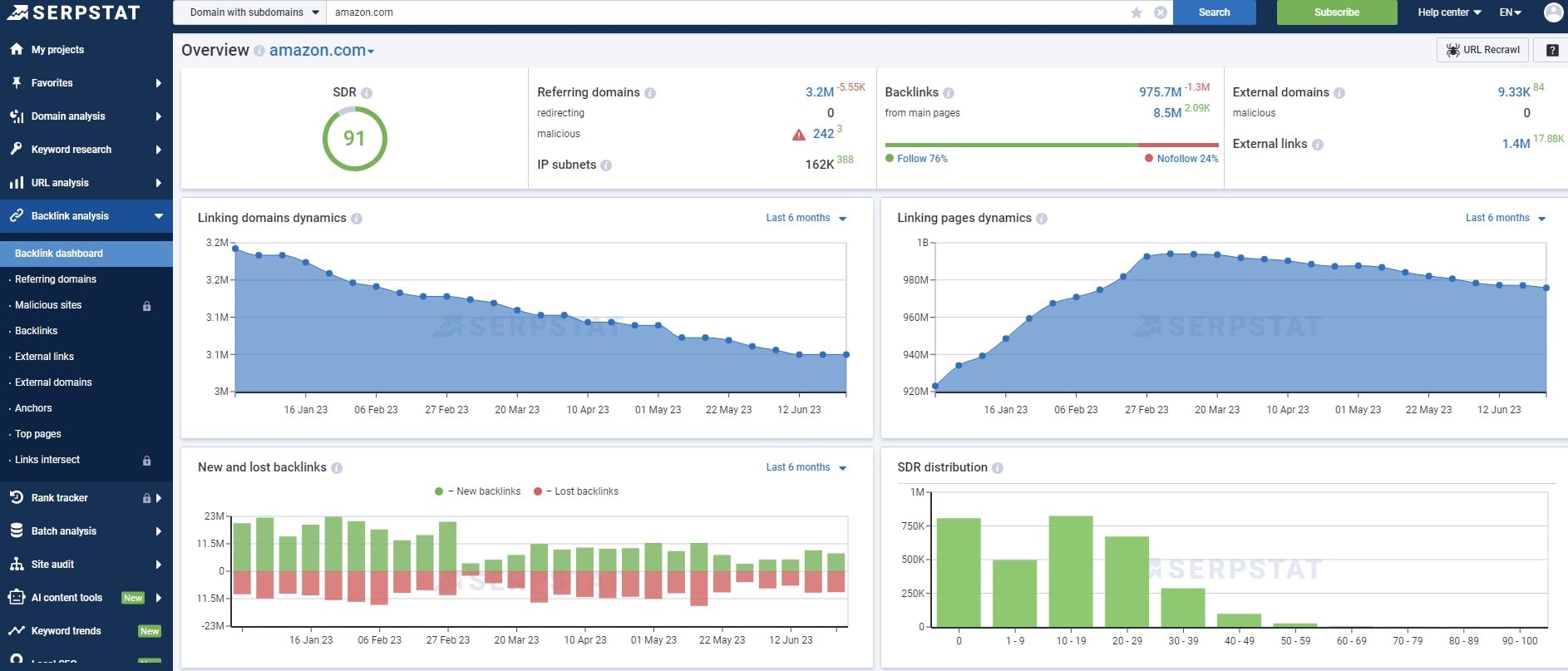
Backlinks connect therapists’ digital presence to the online world in SEO. For therapists, securing quality backlinks is akin to building bridges—each one extends their reach and bolsters their credibility in the vast online landscape. Backlinks, essentially, are nods of approval from one site to another, an endorsement that speaks volumes to search engines.
Core elements of a strong backlink strategy include:
- Quality Over Quantity: Prioritizing links from reputable, relevant sources over fewer links.
- Content Collaboration: Partnering with authoritative websites, such as mental health forums or wellness blogs, to create content that naturally includes backlinks.
- Active Engagement: Participating in industry discussions and online communities, leading to organic, meaningful backlinks.
For therapists, these backlinks are more than SEO tools; they are testimonies of their expertise and trustworthiness. Each backlink shows search engines that their content is useful and deserves a higher rating.
Navigating the world of backlinks requires a strategic approach—understanding how to gain them and the right ones. Creating a digital network that directs potential customers to the therapist’s website boosts visibility and authority.
In essence, the role of backlinks in SEO for therapists is crafting a digital reputation that mirrors their professional standing. These links serve as digital handshakes, opening doors to higher search rankings, increased traffic, and a wider audience needing their expertise.
Leveraging Social Media for SEO
In the digital tapestry where SEO and social media intersect, therapists find a vibrant canvas to paint their online presence. Leveraging social media for SEO is not just about broadcasting a message; it’s about engaging in a conversation that amplifies a therapist’s reach and relevance. Therapists may demonstrate their skills, engage with their audience, and indirectly increase SEO on social media.
Key strategies include:
- Consistent Posting: Regularly sharing valuable content keeps the therapist’s presence active and engaging.
- Hashtag Utilization: Employing relevant hashtags to increase visibility in targeted conversations.
- Audience Engagement: Responding to comments and messages to foster community and encourage sharing.
For therapists, social media is a powerful ally in the SEO journey. It’s a space where professional insights blend with personal touchpoints, creating a narrative that resonates with current and potential clients. Each post, share, and conversation builds brand awareness and gently pushes the therapist’s website, improving SEO through traffic and engagement.
Navigating social media for SEO balances informative content and a relatable, human voice. It’s an opportunity for therapists to break down the digital walls and connect with their audience on a level that transcends traditional marketing tactics.
Social media SEO is a delicate art for therapists. It’s about creating ripples in the digital ecosystem that lead back to their services, turning every like, share, and comment into a stepping stone towards greater online visibility and impact.
Mobile Optimization for Therapy Websites
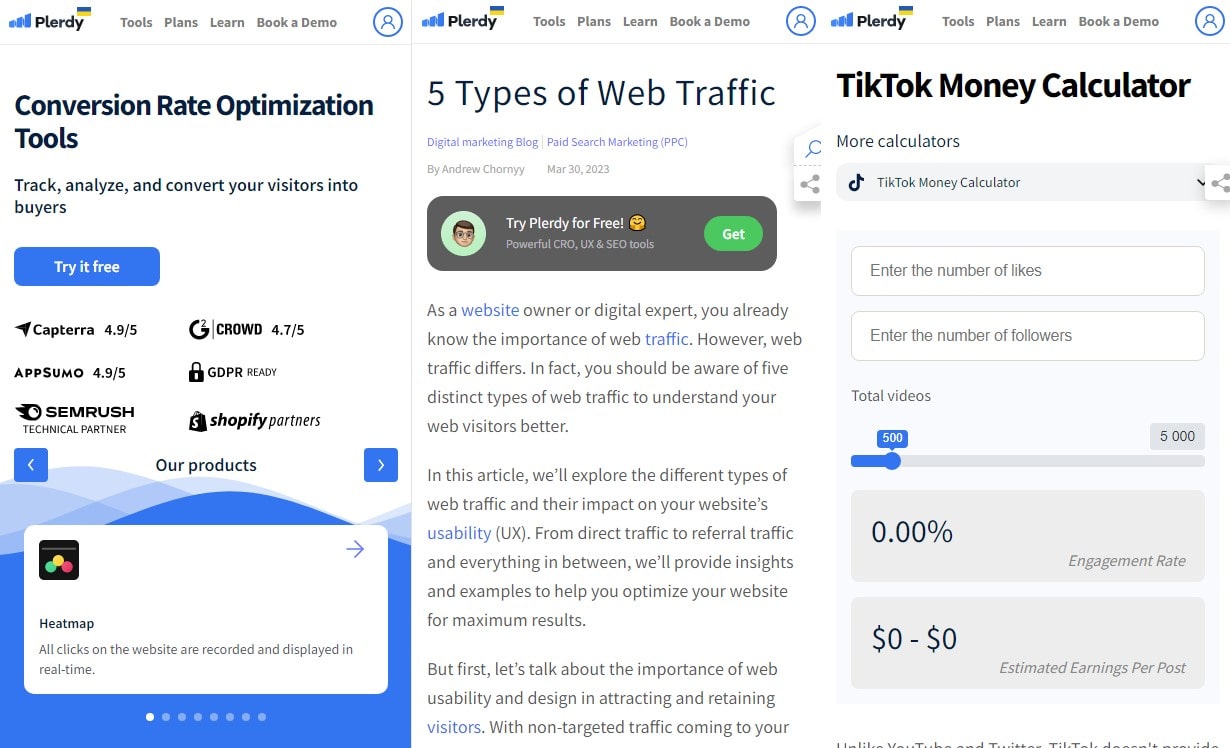
Mobile optimization for therapeutic websites is essential in today’s fast-paced society. Mobile SEO implies therapists must embrace clients’ on-the-go needs. Today, a therapist’s mobile-friendly website shines like a light, directing potential customers to their virtual doorstep.
Key elements to consider for mobile optimization:
- Responsive Design: Crafting a website that adjusts seamlessly across various devices, ensuring a user-friendly experience.
- Speed Optimization: Enhancing loading times to keep mobile users engaged is crucial for maintaining their attention.
- Simplified Navigation: Streamlining the journey through the website, making information easily accessible with a few taps.
For therapists, a mobile-optimized site is more than a technical update; it extends their welcoming and accessible approach. SEO in this context isn’t just about algorithms—it’s about connecting with people where they are most comfortable. In a world where a significant chunk of online searches happens on mobile devices, therapists must ensure their SEO strategies align with this reality.
Through mobile optimization, therapists can effectively meet their clients digitally, offering ease and comfort right from the first interaction. This approach not only boosts their SEO rankings but also reflects their commitment to being accessible and responsive to the needs of their clients.
Mobile optimisation for therapy websites caters to modern clients’ busy lifestyles by making therapists as accessible as a few taps.
Using Analytics to Guide SEO Strategy
In the realm of SEO for therapists, analytics is like the compass that guides a ship through uncharted waters. For therapists, delving into analytics isn’t just crunching numbers; it’s deciphering a story—understanding how clients find and interact with their websites. This insight is crucial in shaping an SEO strategy that resonates with search engines and the people they aim to help.
Analytics offers key insights, such as:
- User Behavior: Track visitors’ navigation of the site, highlighting what captures their interest.
- Traffic Sources: Identify where visitors are coming from and guide outreach efforts.
- Engagement Metrics: Understanding what content engages users the most, informing content strategy.
For therapists, SEO success hinges on more than just visibility; it’s about connecting meaningfully with those seeking guidance. Analytics provides a window into the effectiveness of their SEO efforts, offering a clear view of what works and what needs improvement.
Interpreting this data allows therapists to refine their SEO strategies, ensuring they reach their audience and engage them effectively. This process transforms SEO from a guessing game into a targeted approach tailored to their potential clients’ unique needs and behaviors.
Using analytics to guide SEO strategy empowers therapists to create a more impactful online presence. It’s about evolving with the needs of their audience, ensuring that their digital footprint leads those in need to the right place at the right time.
SEO-Friendly Blogging for Therapists
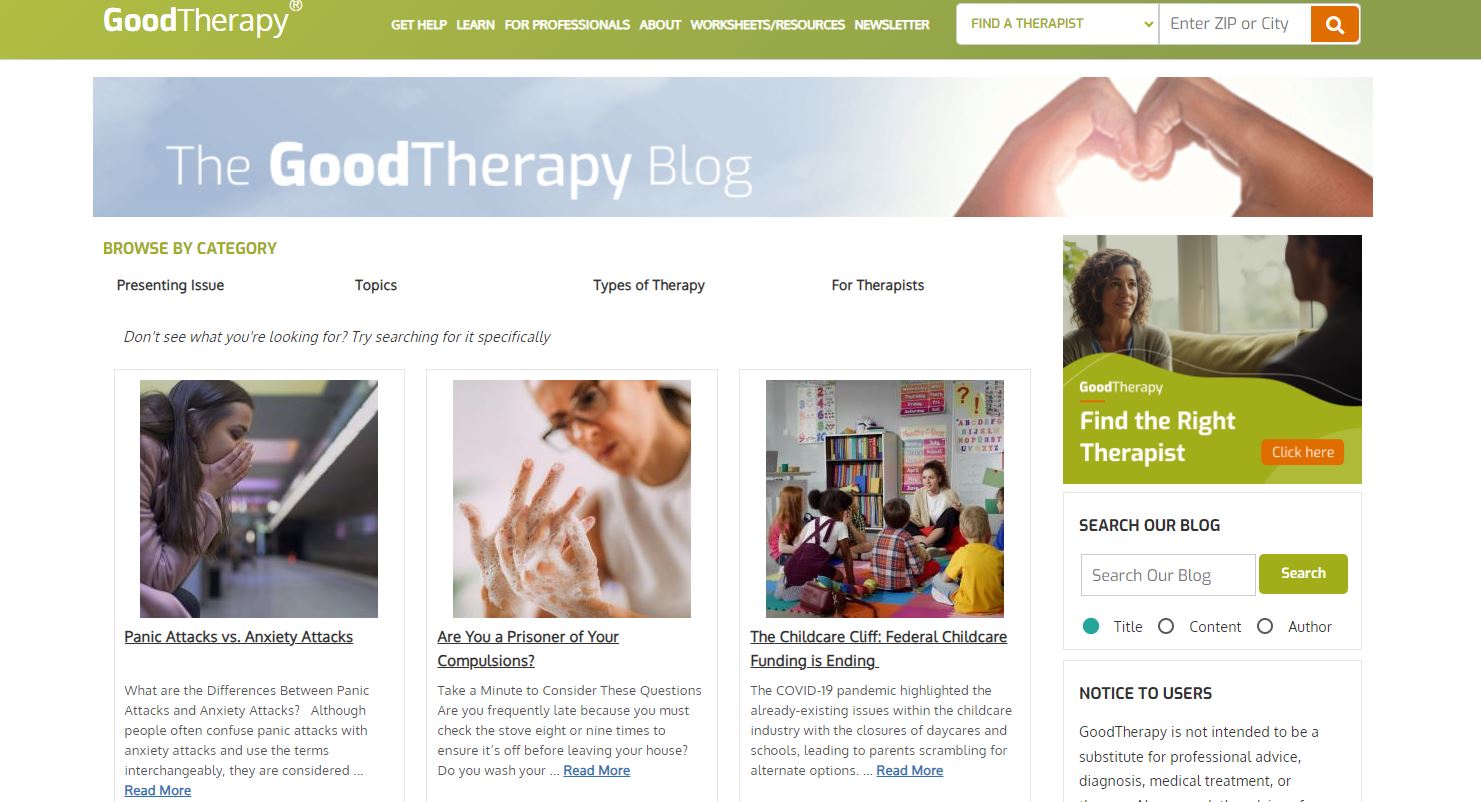
Therapists can weave an informative and engaging web tapestry with SEO-friendly blogging. For therapists, this form of blogging is a dual-edged sword; it aids in climbing the SEO ladder while providing a platform to share their expertise and insights.
Key elements of SEO-friendly blogging include:
- Keyword Integration: Seamlessly weaving relevant keywords into posts, aligning with what potential clients are searching for.
- Engaging Content: Crafting posts that not only inform but also resonate on a personal level with readers.
- Consistent Updates: Regularly refreshing the blog with new content to maintain and boost SEO rankings.
For therapists, blogging is not just about peppering articles with keywords; it’s about creating content that echoes their audience’s concerns, questions, and interests. Each post should blend professional knowledge and empathetic understanding, reflecting the therapist’s expertise and approachability.
This blogging style turns the therapist’s website into a resource hub, attracting search engines and building trust with readers. It’s about establishing a digital voice with authority and compassion, drawing readers into a therapeutic dialogue.
In essence, SEO-friendly blogging for therapists is about crafting narratives that weave together professional wisdom and SEO strategies, creating an informative, engaging, and easily discoverable digital space. It’s a strategic way of reaching out, offering insights, and beckoning potential clients to enter the virtual door.
Voice Search Optimization in Therapy SEO
Voice Search Optimization is reshaping the landscape of therapy SEO, forging a new path for therapists to reach their audience. In this ever-evolving digital era, therapists must adapt their SEO strategies to align with the growing trend of voice-activated queries. More than a technical change, this shift is toward a more intuitive, user-friendly manner to communicate with potential clients.
Essential steps for therapists in voice search optimization include:
- Prioritizing conversational keywords that reflect natural speech patterns.
- Enhancing local SEO, vital for voice search users seeking nearby services.
- Crafting content that answers typical questions directly and conversationally.
- Optimizing for mobile, the primary platform for voice searches.
For therapists specializing in specific areas, such as family counseling or cognitive behavioral therapy, tailoring voice search SEO can direct the right clients to their virtual doorsteps. For example, optimizing for phrases like “family therapist nearby” or “cognitive behavioral therapist in [City]” can significantly improve visibility in voice searches. As therapists integrate these practices, they not only improve their SEO efficiency but also create a smoother, more relatable path for clients seeking their expertise. The future of therapy SEO lies in understanding and leveraging the power of voice search, ensuring therapists remain accessible and relevant in a voice-driven world.
Technical SEO for Therapists

In the labyrinth of digital marketing, technical SEO for therapists is a critical yet often overlooked cornerstone. It’s the behind-the-scenes maestro orchestrating the online visibility of therapists. For therapists, technical SEO is less about the glitz of keywords and more about the nuts and bolts that keep their website running smoothly.
Key components of technical SEO include:
- Website Speed Optimization: Ensuring the therapist’s website loads quickly to enhance user experience and retain visitors.
- Mobile Responsiveness: Tailoring the site to function seamlessly on various devices, meeting clients where they are.
- Secure and Accessible Website: Security with HTTPS and accessibility for all users, including those with disabilities.
For therapists, mastering technical SEO means laying a solid foundation for their online presence. It’s about creating a digital space that is not just visible but also reliable and welcoming. This SEO guarantees that the therapist’s website is more than a digital business card but a useful resource for clients.
Technical SEO might not be as glamorous as other SEO strategies, but for therapists, it’s an indispensable part of connecting with clients in the digital age. It’s the unsung hero of SEO, quietly ensuring that the therapist’s digital presence is robust, secure, and poised for growth. Technical SEO is the backbone of a therapist’s online journey, supporting and enhancing all other SEO efforts.
Conclusion
As we wrap up this comprehensive guide on SEO for therapists in 2024, it’s evident that a therapist’s journey in the digital landscape is both exciting and intricate. SEO is a tool for therapists to reach more people and change lives. By embracing SEO, therapists can transform their practice, moving beyond traditional boundaries to connect with those in need.
Incorporating SEO means therapists are not just clinicians but also digital navigators, steering their practice toward greater visibility and engagement. Here’s what they’ve learned:
- SEO elevates a therapist’s online presence, making them easily accessible.
- A well-optimized website attracts more clients, broadening a therapist’s impact.
- Local SEO ensures therapists connect with their community effectively.
- Ongoing SEO efforts keep therapists ahead in a constantly evolving digital landscape.
This guide has been more than an SEO manual for therapists—it’s been a beacon, guiding them through the digital rapids of 2024. From crafting engaging content to leveraging technical SEO, therapists are now equipped to make their mark online.
Remember, the digital journey for a therapist is continuous. As they apply these strategies, they’ll see their practice grow and evolve, mirroring the dynamic nature of SEO itself. Armed with this knowledge, therapists are ready to embark on an exciting journey, using SEO as their compass in the vast digital expanse.
